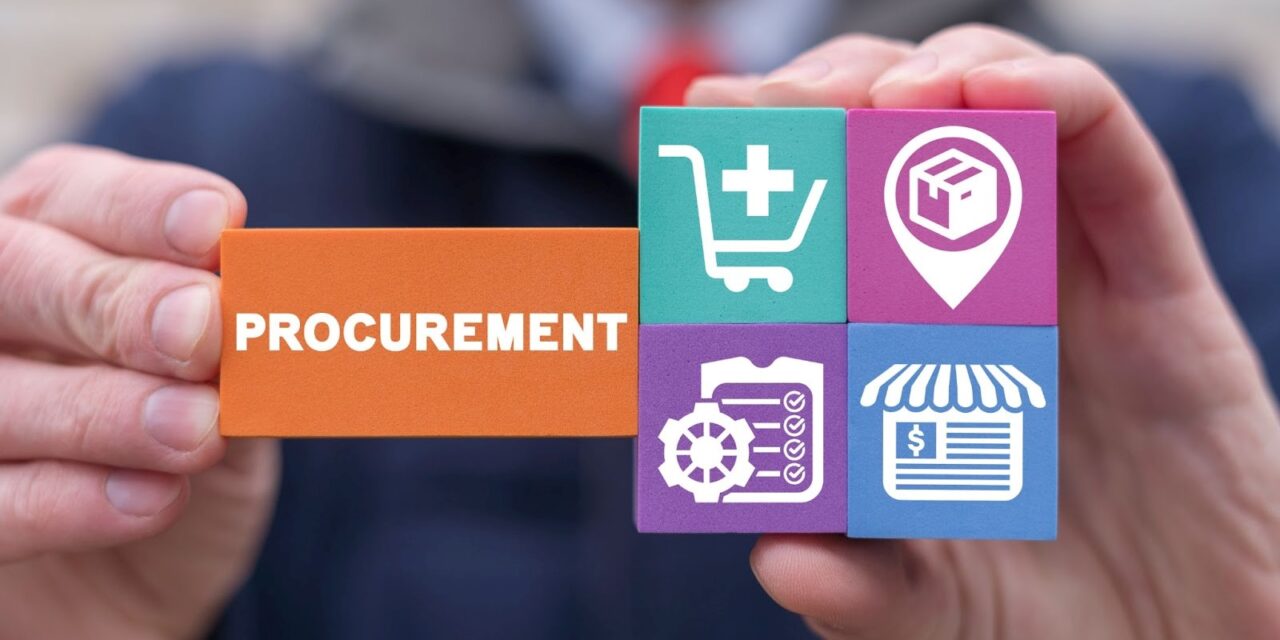- The procure-to-pay process is a comprehensive journey involving steps from identifying a need for goods or services through payment to suppliers, emphasizing the importance of efficient communication, transparency, and strategic supplier relationships.
- Successful implementation of the procure-to-pay process requires meticulous attention to each stage, from request and purchase requisition to supplier evaluation, purchase order creation, goods receipt, invoice verification, and final payment. Leveraging technology for automation and maintaining robust record-keeping practices enhances efficiency, minimizes errors, and contributes to overall organizational agility and growth.
In the complex landscape of modern business operations, an efficient and streamlined procure-to-pay (P2P) process is vital for organizational success. This end-to-end process encompasses every step from the initial identification of a need for goods or services to the final payment to suppliers. In this comprehensive guide, we will delve into the intricacies of the procure-to-pay process, breaking down each step to provide a clear understanding of its importance and how organizations can optimize it for enhanced efficiency and cost-effectiveness.
I. Request for Goods or Services
The procure-to-pay journey commences with the identification of a need within the organization. This can arise from various departments, such as production, operations, or administration. The first step involves creating a request for goods or services (RFQ), which outlines the specifications, quantity, and any other relevant details. Clear communication at this stage is crucial to ensure that the subsequent steps align with the organization’s needs.
The RFQ serves as the initial bridge between the end-users and the procurement department. It encapsulates the essence of what the organization requires, laying the foundation for the procurement process. This stage is not only about defining the need but also about understanding the strategic objectives behind the request, ensuring alignment with the overall goals of the organization.
II. Purchase Requisition
Once the RFQ is approved, a purchase requisition is generated. This document formalizes the internal request and serves as the foundation for the subsequent procurement processes. The purchase requisition includes details such as the item description, quantity, and any specific instructions for the procurement team. This step is critical for maintaining transparency and control over the procurement process.
The purchase requisition is the formal request from the requesting department to the procurement team to initiate the purchasing process. It serves as a means of control and documentation, ensuring that all purchases are authorized and align with the organization’s budget and strategic objectives. This step is crucial for preventing unauthorized purchases and maintaining financial discipline.
III. Supplier Identification and Evaluation
With the purchase requisition in hand, the procurement team initiates the process of identifying and evaluating potential suppliers. This involves conducting a thorough assessment of suppliers’ capabilities, reliability, and pricing. Establishing strong relationships with suppliers is essential for securing favorable terms and ensuring a consistent supply of quality goods or services.
Supplier identification is not just about finding a source for the required goods or services; it’s about establishing a partnership. The procurement team must evaluate potential suppliers based on various criteria, including their financial stability, track record, ethical practices, and capacity to meet the organization’s demands. A robust supplier evaluation process contributes to the long-term success and sustainability of the procurement process.
IV. Purchase Order (PO) Creation
Once a suitable supplier is identified, a purchase order (PO) is created. The PO is a legally binding document that outlines the details of the transaction, including the agreed-upon price, quantity, delivery date, and any other terms and conditions. Issuing a PO provides clarity and formalizes the commitment between the buyer and the supplier, reducing the risk of misunderstandings or disputes.
The creation of a purchase order is a pivotal moment in the procure-to-pay process. It transforms the intentions and agreements into a concrete, legally binding document. The PO not only protects the interests of the buyer but also sets clear expectations for the supplier, fostering a transparent and accountable relationship.
V. Goods Receipt
Upon receiving the ordered goods or services, the next step in the procure-to-pay process is the goods receipt. This involves physically verifying that the delivered items match the specifications outlined in the PO. The procurement team inspects the quality and quantity of the goods and records any discrepancies. Accurate goods receipt documentation is crucial for the subsequent invoice reconciliation process.
The goods receipt process is a crucial checkpoint in the procurement journey. It ensures that the organization receives what it has paid for and that the delivered items meet the specified quality standards. Any discrepancies detected during this stage must be documented and communicated promptly to the supplier for resolution.
VI. Invoice Verification
Following the goods receipt, the finance department undertakes the task of verifying the supplier’s invoice against the PO and goods receipt. This step ensures that the invoiced amount aligns with the agreed-upon terms and that any discrepancies are promptly addressed. Automation and digital tools play a significant role in streamlining this verification process, reducing the likelihood of errors and accelerating the payment cycle.
Invoice verification is the financial checkpoint that ensures accuracy and consistency in the procurement process. This step involves matching the supplier’s invoice with the corresponding PO and goods receipt. Automation not only expedites this process but also minimizes the risk of human error, ensuring that the organization pays the correct amount for the delivered goods or services.
VII. Three-Way Match
The three-way match is a critical reconciliation process that involves comparing the information on the PO, goods receipt, and supplier invoice. A successful three-way match signifies that the goods or services were received as ordered, the supplier’s invoice is accurate, and the financial transaction can proceed smoothly. Any discrepancies detected during this process require investigation and resolution before moving to the next step.
The three-way match is the final confirmation that the procurement process has been executed successfully. It provides a comprehensive validation of the entire process, from the initial request to the actual receipt of goods and the corresponding financial transaction. Resolving discrepancies at this stage is crucial for maintaining the integrity of the organization’s financial records.
VIII. Approval and Payment
Upon successful completion of the three-way match, the invoice moves through the approval process. This typically involves obtaining approval from relevant stakeholders within the organization, such as department heads or budget managers. Once approved, the finance department initiates the payment process, transferring funds to the supplier in accordance with the agreed-upon payment terms.
The approval and payment stage is the culmination of the procure-to-pay process. It involves not only the financial transaction but also the acknowledgment that the goods or services have met the organization’s standards. Timely payment is crucial for maintaining positive relationships with suppliers, fostering trust, and ensuring a smooth procurement cycle for future transactions.
IX. Record Keeping and Analysis
The final step in the procure-to-pay process involves diligent record-keeping and analysis. Maintaining comprehensive records of all transactions, including purchase orders, invoices, and payment receipts, is essential for audit compliance and financial reporting. Additionally, organizations can leverage data analytics tools to gain insights into spending patterns, identify cost-saving opportunities, and optimize future procurement decisions.
Record-keeping is the backbone of a well-managed procurement process. It not only ensures compliance with regulatory requirements but also provides a historical record that can be invaluable for strategic decision-making. Analysis of procurement data enables organizations to identify trends, assess supplier performance, and implement continuous improvement initiatives for enhanced efficiency and cost-effectiveness.
BONUS TIP
Embrace continuous improvement: Regularly evaluate and refine your procure-to-pay process. Solicit feedback from stakeholders, analyze data, and stay updated on industry best practices and technological advancements. Continuous improvement ensures adaptability to changing business environments and the sustained optimization of procurement operations.
Conclusion
In the dynamic landscape of modern business, the procure-to-pay process stands as a linchpin for organizational success. Its intricate web of steps, from recognizing the need for goods or services to the final payment to suppliers, underscores the critical importance of efficiency, transparency, and strategic collaboration.
As organizations navigate an environment marked by rapid changes and heightened competition, the procure-to-pay process emerges not merely as a transactional necessity but as a strategic driver. The ability to seamlessly execute each stage, from the initial request to the payment phase, demands a holistic approach. Efficient communication, transparent documentation, and strategic supplier relationships lay the foundation for a procurement process that not only meets immediate needs but aligns with broader organizational goals.
Yet, the journey doesn’t end with the successful execution of a procurement cycle. The true power lies in a commitment to continuous improvement. Organizations should regularly assess their procure-to-pay process, seeking feedback from stakeholders and leveraging data analytics to gain insights. Staying attuned to industry best practices and embracing technological advancements ensures that the procurement process remains agile and adaptable to emerging challenges and opportunities.
Technology, particularly automation, has become a game-changer in this realm. The integration of digital tools not only streamlines manual tasks but also reduces errors, accelerates transactional cycles, and enhances overall process efficiency. The strategic use of technology allows organizations to focus on higher-value activities, fostering innovation and strategic
decision-making.
Moreover, maintaining robust record-keeping practices is not just about compliance; it is a strategic asset. Comprehensive records serve as a historical archive that can guide future decisions and offer insights into spending patterns and supplier performance. In an era where data is a powerful asset, organizations that harness the analytical capabilities of procurement data gain a competitive edge, enabling them to identify trends, optimize costs, and drive sustainable growth.
In essence, the procure-to-pay process is a living system within an organization, evolving with the needs of the business and the advancements in technology.
The conclusion of each procurement cycle should mark not just the completion of a transaction but a stepping stone toward operational excellence. By embracing a commitment to continuous improvement, leveraging technology, and maintaining a strategic perspective, organizations can transform the procure-to-pay process from a routine function into a dynamic force that propels them forward in the ever-evolving business landscape.












